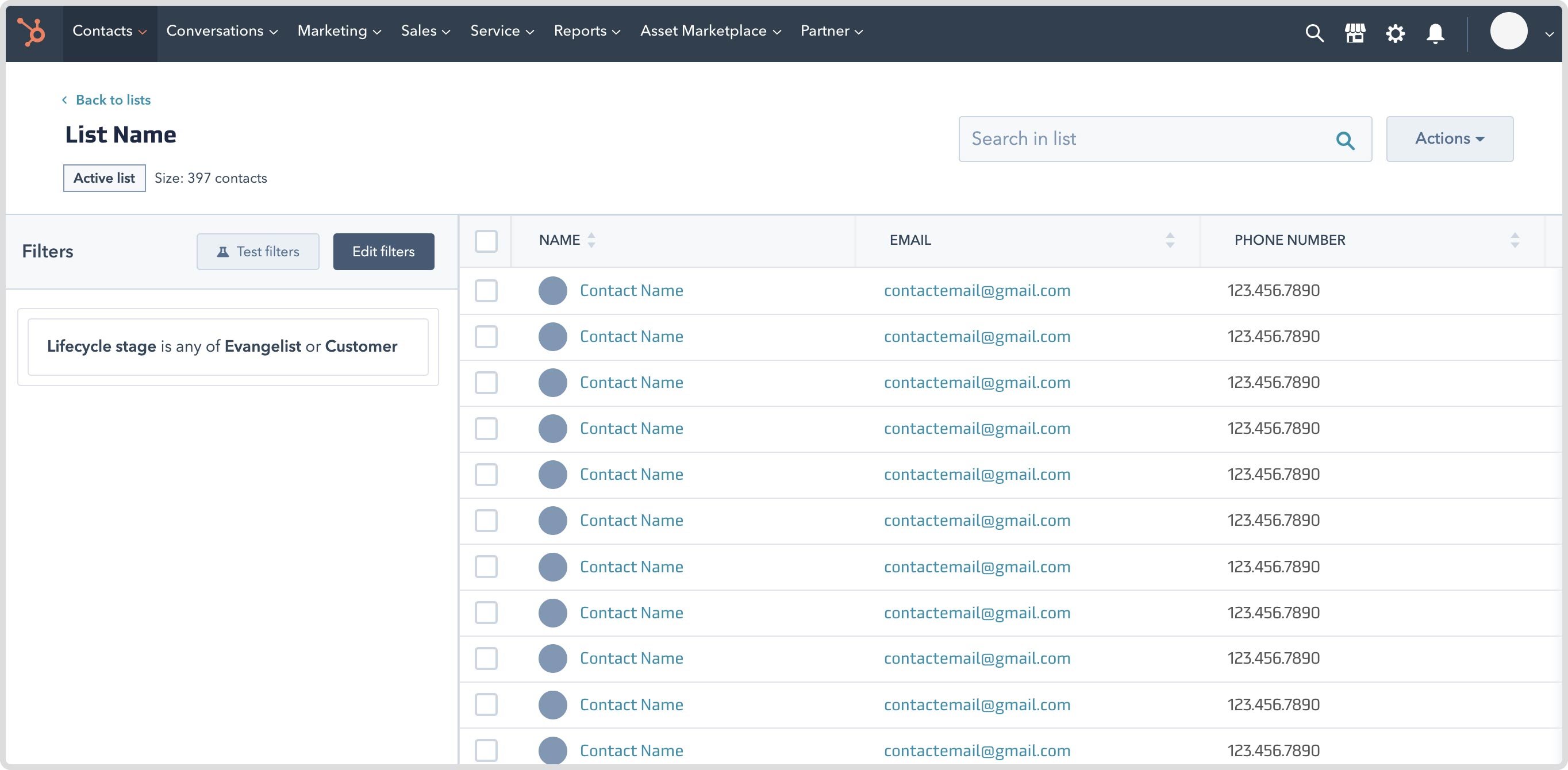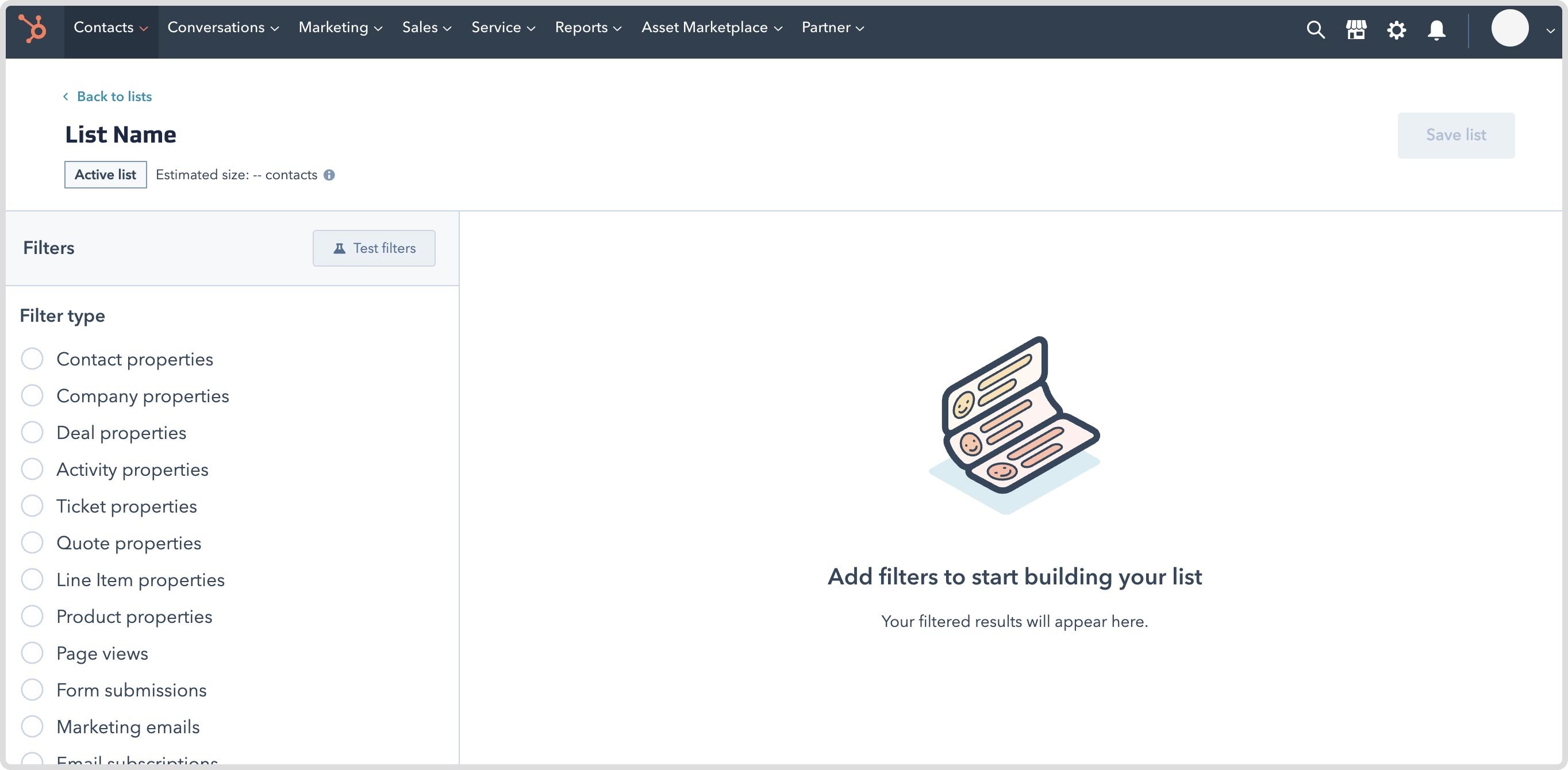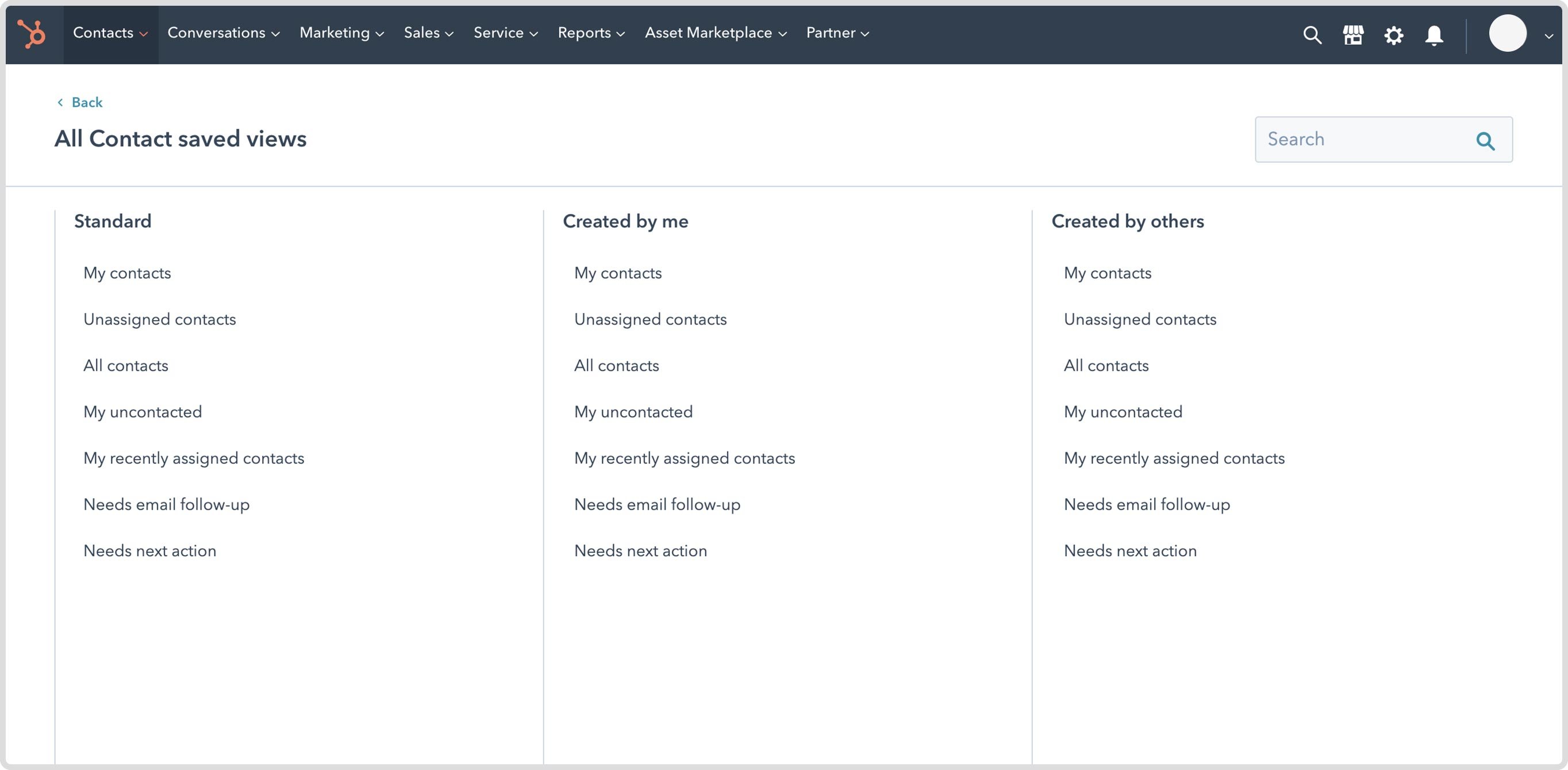Views vs. Lists in HubSpot. What’s the Difference and Why Do They Matter?
 Krista
|
Krista
|

How to use HubSpot views and HubSpot lists for marketing and sales
When we work with sales and marketing teams using HubSpot, there’s often a question that comes up about lists vs. views. What’s the difference? When should I use one or the other? Can’t we just make lists for everything? These are all great questions. While they appear to do the same thing, they both serve very different purposes and should be used at different times.
Understanding the differences and knowing when to use each can significantly improve your productivity and reporting. In this post, I’ll go through the key differences and some best practices to try.
What Are HubSpot Lists?
A list allows you to create a list of contacts or companies based on property values and other characteristics, including activities. In HubSpot, there are two types of lists, static and dynamic.
Static List:
A static list is a list that is more like a snapshot. It doesn’t update as more contacts or companies meet the criteria.
Dynamic List:
Once created, a dynamic list will continue to enroll or unenroll contacts or companies as they meet the criteria.
We find it most helpful to use dynamic lists most of the time because it ensures you’re capturing new people being added every day. But that’s not to say a static list isn’t handy from time to time.
When Would I Use HubSpot Lists?
Generally speaking, if we needed to take action on a group of contacts, we would make a list. For example, we can't send a marketing email to a "view" — we'd need a list to accomplish that. Another area of note is automation workflows. For instance, setting up an email nurturing campaign requires setting specific criteria in a list to pull it into the workflow. This can not be done with a view.
As a best practice, we save all of our imports as lists. That way, they're easier to find, and we don't have to waste time tracking them down later.
When to use lists:
- Sending a marketing email to a list of contacts
- Creating a list of bounced contacts
- Enrolling a list in a workflow
- Using List membership filters in other lists and custom reports
- Creating ads audiences with lists
- Sending customer satisfaction surveys to contacts with a static list
When Should I Not Use HubSpot Lists?
As a rule, when trying to work sales leads, I would not use a list. While technically this could work, it's clunky and not the most efficient way to get the information you want. The "views" tool works better for something like this (I'll explain more below).
Another way I would avoid using lists is for reporting. It's much better if you build your reports in the dashboard. While they can appear to work similarly, reports will give you data along with visuals that make it much easier to understand and more helpful.
Helpful Tips for Using HubSpot Lists
Here are a couple of quick tips we have learned over the years regarding HubSpot lists.
- Find a naming convention for your lists. Sure they may not be hard to find when you start, but in a year or five years from now, you may have a lot of data built up, and finding the one you want may be tricky. This will save you time and provide clarity, so there are no mishaps with sending things to the wrong list.
- Use folders to organize your lists. Again back to the importance of organization, the folders make lists so much easier to find in HubSpot.
- Build exclusion lists. Lists are helpful for exclusions. This can act as a safeguard to ensure you're sending exactly the right message to the right group of people. These lists can be used to ensure contacts don't sneak into email communication by accident.
What Is a View?
With a view, you can filter records based on property values, limiting the records you see for analysis. This can be done with contacts, companies, deals, and call tabs in HubSpot. You can quickly create views on the spot as a quick check of a specific data set or group. Or you can save the view to come back to continuously and review. You can make a view using any field in the database and combine them to see exactly the information you want.

When Would I Use a View?
If we’re being honest, we use views all the time. It’s probably one tool we touch just about every day. It’s super helpful when we’re sorting through data and just want a quick look at how many people meet certain criteria. For example, how big is a group of people based on their interest — should we make a new communication campaign to send marketing to them? Think of those “I wonder” questions when working on a strategy to hit a particular group of people.
We also use views all the time with sales teams. This is a really good way for them to sit down at the computer in the morning and know exactly what they need to do. I often encourage them to save views for their prospecting, follow-ups, and deals so they can quickly jump in without having to track down a list of people. We often find this works perfectly in conjunction with lifecycle stages and lead status, which, if you haven’t set up, would be well worth your while.
When to use views:
- Creating a list of contacts that are ready for you to follow up with
- Updating or seeing sales territories based on geographical locations
- Creating housekeeping lists to keep data clean and up-to-date
- Reviewing contact data to understand segmentation opportunities
- Reassigning property field information in bulk
- Creating prospecting lists for sales teams to work through
- Enrolling contacts into sales sequences
When Should I Not Use a View?
Views are pretty flexible, but it’s important to remember you can not perform an action with them. They are an “analysis” tool. There is the exception of bulk editing property values and enrolling contacts into sales sequences. But, if you needed to enroll someone in an automation workflow, marketing email, or report, a view would not be able to do the job.
Helpful Tips for Using Views
If you click away from the view without saving it, you will have to re-setup all the filters to view again. If we're being honest, we still have a brain lapse on this sometimes. It's easy to forget that you hadn't saved the view when you're looking through a list of people and want to jump into a specific contact to dig in further. We try to save views whenever we know we'll be using them again. You can always delete the view later if it's not useful anymore. You can also save them as private if the rest of the organization doesn't need to see them.
Maximize your marketing and sales team efficiency by getting the most out of HubSpot.
I hope you found this article helpful and insight into using the HubSpot views and lists tools. They can significantly improve your marketing and sales efforts. If you have any questions about using them, please reach out. Also, if you have any questions or are interested in the HubSpot software, set up a time to connect with me, and we can cover how HubSpot can improve your marketing and sales efficiencies.
More reading:
Subscribe to Our Blog
Stay up to date with the latest marketing, sales, and service tips.



